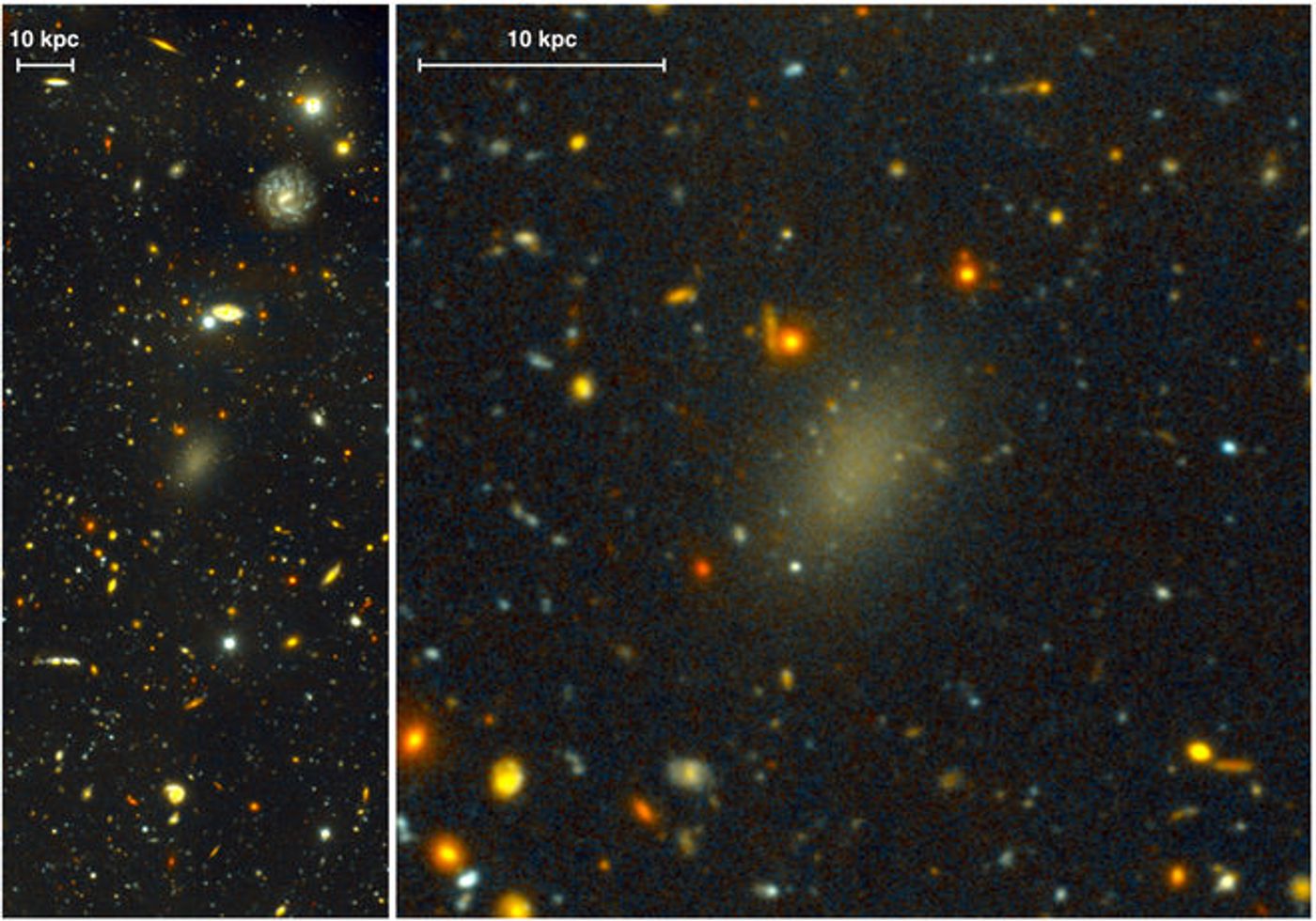Scientists Think This Galaxy is Mostly Comprised of Dark Matter
When astronomers look for new galaxies, they’re looking for huge clusters of stars, or bright spots, where it’s evident that gravity is holding everything together.
On the other hand, there’s a very strange galaxy out there in the Coma Cluster, which is about 300 million light years away from Earth, dubbed Dragonfly 44.
Scientists can’t seem to wrap their minds around it because it doesn’t contain enough stars to have the gravity required to hold itself together, so something else must be at work. Moreover, it’s very faint; so faint, in fact, that we had to use some of the most powerful telescopes ever made to see it.

Image Credit: Pieter Van Dokkum/Robero Abraham/Gemini
In a paper published in the Astrophysical Journal Letters, scientists explain what it was like to peer into the dark abyss that is Dragonfly 44.
“Very soon after its discovery, we realized this galaxy had to be more than meets the eye. It has so few stars that it would quickly be ripped apart unless something was holding it together,” lead author Pieter van Dokkum from Yale University said.
Using the Keck Observatory and 8-meter Gemini North Telescope, the scientists came up with the idea that Dragonfly 44, despite how dim it is, still has a ton of unseen mass. In fact, its mass is pretty similar to that of the Milky Way.
The idea about its mass stemmed from the observation of its star velocities. Galaxies with more mass tend to have faster star velocities, and for a galaxy with so few stars and invisible mass, Dragonfly 44 sure seems to have a fast star velocity.
One of the strongest theories scientists can come up with as to why the galaxy is so dim, yet still packed together with gravity, could be that dark matter is acting like the bonding agent. In fact, they’ve estimated that the galaxy could be composed of up to 99.99% dark matter, which would explain all of the unseen mass.
It raises a lot of questions about Dragonfly 44, because we don’t completely understand dark matter or how the galaxy was even formed.
“Ultimately what we really want to learn is what dark matter is. The race is on to find massive dark galaxies that are even closer to us than Dragonfly 44, so we can look for feeble signals that may reveal a dark matter particle,” van Dokkum said.
Dark matter is very mysterious. We have yet to really understand what it is or how it’s made, and despite how abundant it is in our universe, we still find it very difficult to find because it’s invisible to our eyes.
Source: Yale University via EarthSky








